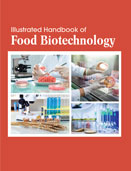Handbooks

Biotechnology has a long history of use in food production and processing. For ten thousand years fermentation, a form of biotechnology, has been used to produce wine, beer and bread. The tools of food biotechnology include both traditional breeding techniques, such as cross-breeding and more modern methods, which involve using what we know about genes, or instructions for specific traits, to improve the quantity and quality of plant species. The potential benefits of biotechnology are enormous. Food producers can use new biotechnology to produce new products with desirable characteristics. These include characteristics such as disease and drought-resistant plants, leaner meat and enhanced flavor and nutritional quality of foods. This technology has also been used to develop life-saving vaccines, insulin, cancer treatment and other pharmaceuticals to improve quality of life. This illustrated work provides a balanced and organized discussion of the communications of food science and biotechnology at the molecular and industrial levels.
Biotechnology is a broad term that applies to the use of living organisms and covers techniques that range from simple to sophisticated. For centuries people have crossbred related plants or animal species to develop useful new varieties or hybrids with advantageous traits, such as better taste or increased productivity. Traditional crossbreeding produces changes in the genetic makeup of a plant or animal. The process can be very time consuming as it is necessary to breed several generations in order to not only obtain the desired trait, but also remove numerous unwanted traits. In contrast, modern agricultural biotechnology techniques, such as genetic engineering, allow for more precise development of crop and livestock varieties.
Illustrated Handbook of Food Biotechnology focuses on the use of biotechnology for the production of ingredients to be used in the food industry. Biotechnology has a long history of use in food production and processing. For ten thousand years fermentation, a form of biotechnology, has been used to produce wine, beer and bread. Selective breeding of animals such as horses and dogs has been going on for centuries. Selective breeding of essential foods such as rice, corn and wheat have created thousands of local varieties with improved yield compared to their wild ancestors. Today, through newer biotechnology and genetic engineering, scientists use techniques such as recombinant DNA (rDNA). Scientists, by using rDNA, can move one gene, the inherited instruction for specific traits, from one organism to another and omit the undesirable traits. This enables food producers to obtain animal and crop improvements in a much more precise, controlled and predictable manner. New applications of biotechnology are leading to notable improvements in yield and productivity in crop plants and animals. Crops may be specifically improved for functional attributes, such as nutrition, flavor, texture, and processibility. These improvements result in added value to the food processor as well as to the consumer. Modern Biotechnology is helpful in enhancing taste, yield, shell life and nutritive values. This is also useful in food processing (fermentation and enzyme involving processes). So Biotechnology is beneficial in erasing hunger, malnutrition and diseases from developing countries and third word. Modern biotechnology products are commercially reasonable hence it can improve agriculture as well as food industry that will result in raise in income of poor farmers.
The Illustrated Handbook of Food Biotechnology provides the reader a balanced and organized discussion of the interactions of food science and biotechnology at the molecular and industrial levels. This Handbook is particularly useful for students and researchers of biotechnology, agricultural biotechnology, industrial microbiology, applied microbiology, biotechnology, bioprocesses technology and bioresources technology.